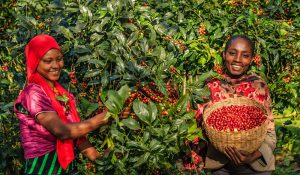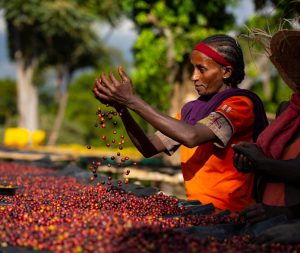
Addis Ababa, August 5, 2023 (Walta) People travel to different destinations, not only just to see places and meet new people, but to test and enjoy the food and drinks as well as immerse themselves in the local culture. World Food Travel Association has this mantra that best expresses why people travel to enjoy local gastronomy (which includes drinks) – “The act of traveling for a taste of place in order to get a sense of place.”
World Food Travel Association indicated that tourists spend approximately 25% of their travel budget on food and beverages. That is a significant amount for the recipient destinations as well as local communities. It is because food and drinks are the reason for their adventure in a new destination.
When we talk about drinks, coffee comes to the forefront of the list. The world drinks, on average, over 2.5 billion cups of coffee every day, according to the British Coffee Association. It has become part and parcel of modern society.
Beyond enjoying the stimulating effects of caffeine in their daily life, people start to crave witnessing the entire coffee production process from seedling to pouring into their cups. They want to visit the farms, the communities, their daily life, and their culture (including their coffee culture). This brings us to the beginning of coffee tourism, one of the trending tourism segments.

Coffee tourism is described as “being related to the consumption of the coffee history, traditions, products, and culture of a destination,” according to Lee Jolliffe, the Author of Coffee Culture, Destination and Coffee Tourism. It is related to coffee brewing, consumption, social value, and the coffee production process, which involves many stages and nuances.
Coffee tourism has paramount economic, social, and cultural environmental importance. In terms of the economy, coffee tourism creates jobs and empowers the local community. This helps to cut the rural-urban migration. It also creates a good image of the destination’s community culture and values. Coffee tourism promotes coffee production and increases the quality of the product.
People travel just for more than to discover new flavors through travel but also to experience the whole phenomenon. Customers have improved their experience of coffee consumption by understanding how coffee is produced, and coffee has grown.
That is how the idea of coffee tourism has emerged and taken shape since the late 1990s.

Ethiopia is the origin of coffee and has a rich coffee culture deeply ingrained in the social fabrics that have untapped potential in this respect. In addition, the country is known for its high-quality, single-source Arabica coffee such as Yirgacheffe, Sidamo, and Harrar.
Everything from the wild and organic coffee growing harvesting to the brewing of coffee is quite different from the Western culture in terms of the material used and how and when it is served. All these are tourism products if properly marketed and promoted.
Colombia, Brazil, Ethiopia, Vietnam, Uganda, and Italy are important coffee tourism destinations for coffee enthusiasts.
Tour companies in Ethiopia, in their own initiatives, have prepared tailor-made coffee tours for a fairly long time. Now that the potential is obvious that the Ministry of Tourism has given due attention. To this end, the coffee tour is included in their promotion, both digitally and in cultural events prepared by Ethiopian missions abroad.
The UNESCO-recognized Kafa Biosphere Reserve, Bonga, Harar, Jimma, Yirga Chafe, Bebeka, Tepi Coffee Estates, and the Lake Tana Basin are very important coffee touring sites in Ethiopia.
By Tewodros Sahile